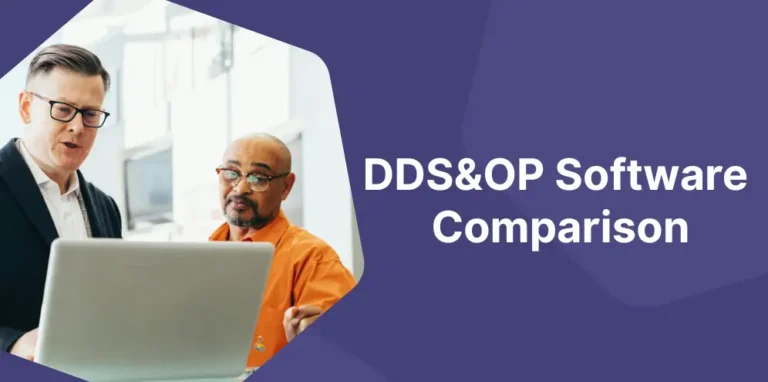Demand Driven Material Requirements Planning (DDMRP) is compatible with, and even supportive of, many other manufacturing philosophies: Lean, TOC, Flow, Pull, etc. However, since some of these ideas have been around for decades, most notably Lean Manufacturing, it can seem like DDMRP is an old idea given new life under a different name.
A classic example of this was given the other day when a manufacturer commented that basing production and replenishment on true demand (the underlying principle of DDMRP) is what manufacturers have been doing for millennia. For example, the artisan making clay pots in ancient Greece didn’t just keep making pots to stock. He made pots to replenish his supply after selling pots on market day. He might even fashion a particular pot to fulfill a customer’s order.
So aren’t we just trying to claim the idea is ours when it’s really been around for millennia?
Sure, both approaches are based on a basic underlying truth: If you only replenish materials and schedule production based on demand, you’ll have less inventory on hand, higher service levels, and better margins. So in that sense, demand-driven manufacturing is an old idea.
However, the approach that worked for the ancient Greek artisan would be challenging to replicate for the manufacturer selling thousands of SKUs of mass-produced dinnerware through a global supply chain. DDMRP adapts the concept of being demand driven to the realities of today’s fast-paced, global world.
Let’s unpack that a bit by looking at two competing replenishment approaches: MRP and Lean Manufacturing.
MRP vs. Lean Manufacturing
MRP was the first attempt to solve the supply chain issues experienced by modern manufacturers. Not surprisingly, MRP was developed by Dick Ling in the 60s while working for IBM and was popularized Joseph Orlicky in the 70s. It was a way for IBM’s customers to use computer technology to manage inventory and control processes. (And for IBM to sell more computers.)
Of course, it’s easy for us to be dismissive of MRP because of its drawbacks, but without the introduction of MRP (and the computer), it’s doubtful our world would be as prosperous as it is today.
The challenge with MRP, however, is that replenishment orders are done at the planning level. And, as our world has become more and more Volatile, Uncertain, Complex, and Ambiguous (VUCA), it’s become harder and harder to forecast accurately. In my last post: Why Improvements in the Manufacturing Sector May Be Unsustainable, I mentioned that I rarely see forecast accuracy above about 70%. Certainly not at the SKU level.
In its purest sense, Lean Manufacturing is a pull system in which supply chain order generation is done at the execution level. It’s based on the concepts of “one piece flow” or as Toyota (the originators of the Lean philosophy) called it “sell one, buy one, make one.” (Kind of sounds like our ancient potter’s approach, doesn’t it?)
One other key difference between MRP and Lean has to do with interdependences. In an MRP system, all elements are interdependent. In a Lean system, all elements are independent.
While both of these philosophies have a place in manufacturing (yes, even MRP), they both have their drawbacks as well. The traditional deficiencies of MRP hinder the flow of information and materials, and Lean doesn’t offer a complete toolset for volatile and complex supply chains.
We need a system that protects the flow of relevant information and materials. It needs to synchronize complex and dynamic environments as well as pacing to actual demand. Plus, it needs to provide a clear replenishment signal for every resource in our supply chain.
Enter DDMRP
DDMRP was introduced in 2011 by Carol Ptak and Chad Smith of the Demand Driven Institute. Here’s how they define the approach:
Demand Driven Material Requirements Planning is a formal multi-echelon planning and execution method to protect and promote the flow of relevant information through the establishment and management of strategically placed decoupling point stock buffers.
The protection and the flow of relevant information is fundamental to operations, but it is the decoupling of stock buffers that makes DDMRP fundamentally different than other systems – and gives it the ability to handle today’s complex supply chain requirements.
As noted in my last post, our VUCA world creates nervousness in the complex supply chain, where high-level changes in the master production schedule lead to amplified changes in timing and quantity at lower levels. This creates the bullwhip effect that causes us to stock not enough of the right inventory and too much of the wrong. These decoupling buffers dampen the effect, so we have enough of the right inventory and a minimal amount of the wrong.
We might suppose that the Greek artisan used a form of inventory buffer if he increased his supply of an in-demand but hard to find clay. Given the limited materials he had to work with, it would be pretty easy for him to decide where to place his buffers. It may not be so obvious in your supply chain, so that’s what I’m going to discuss in my next post.
If you have questions about any of the topics I’ve covered or want to learn more about how DDMRP can help you achieve your strategic objectives, DDMRP training, or anything else reach out to me either on LinkedIn or on my website.
Ken Titmuss has helped more than 200 companies with all aspects of their manufacturing planning and control systems and provided their employees with courses to raise their level of understanding of Operations Management and Supply Chain Management. Most of Ken’s work has been in Southern Africa, but more recently, he has run programs in Namibia, Botswana, Kenya, Zimbabwe, Nigeria, USA, UK, Ireland, France, India, Australia, Dubai, Saudi Arabia, Jordan, Mauritius, Singapore, and Lebanon.
Ken Titmuss is a team member of Demand Driven Africa (a division of PSQ CC), a supply chain specialist enterprise that provides DDMRP training, consultation and implementation using Demand Driven Technologies software product Intuiflow, formerly known as Replenishment+. With successful implementations already completed, and a growing number of supply chain personnel trained, Demand Driven Africa are leaders in the field offering:
- DDMRP Consulting
- DDMRP Training
- DDMRP Implementation
- Other Supply Chain Training & Consultation














